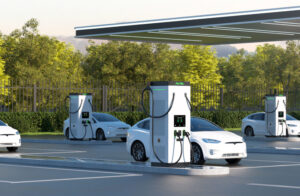Power outages can sometimes strike unexpectedly. And trust me, it can leave homeowners in the dark, sometimes for hours and sometimes for days. Now, it can be due to severe weather, grid failures, or maybe maintenance issues. But if you have an effective backup generator, then you’ll surely have peace of mind. Another good news is that your essential appliances would be running without any issue. However, before you just go and invest in one, it’s necessary to know about the generator installation costs, and you should know what to expect during the process.
Therefore, if you’re in the market for a reliable generator, Myrtle Beach Generators is a trusted provider. They offer expert installation and maintenance services.
Breaking Down Generator Installation Costs
Let’s see what really goes into the pricing of a generator installation. These costs can be different as they are based on your specific situation. However, here’s a comprehensive breakdown for a better understanding:
Portable vs Standby Generators
Portable generators (500−2,500) offer an affordable solution for occasional outages. These units don’t require permanent installation but must be manually started and connected when needed. They’re ideal for powering essentials during short outages but lack the convenience of automatic operation.
Standby generators (3,000−15,000+) provide complete home protection. These permanently installed units kick in within seconds of an outage. On the other hand, they can be more expensive upfront, and they offer perfect operation. Also, they can power your entire home, including major appliances and HVAC systems.
Sizing Your Generator Properly
When investing in the right generator size. There are some very important things that you need to keep in mind. These important factors keep your generators efficient and maintained. Just understand that a unit that’s too small won’t be able to meet your needs, while one that is too large will waste money on more capacity and fuel.
However, there are small generators (5-10 kW, 3,000−6,000) that can handle necessities like refrigerators and small appliances. Also, there are medium units (10-20 kW, 6,000−10,000) that can add capacity to HVAC systems and water heaters. Lastly, you can find large generators (20-50 kW,10,000−20,000+) that can provide whole-home coverage for larger properties.
Fuel Type Considerations
Your fuel choice impacts both installation complexity and long-term operating costs. Natural gas generators (2,000−5,000 installation) connect directly to existing gas lines but may be restricted during major outages. Propane units (3,000−6,000) require storage tanks but offer more reliable fuel access. Diesel generator efficiency (4,000−8,000) provides superior efficiency but needs careful fuel management.
The Installation Process Explained
Understanding what happens during installation helps set proper expectations. The process typically follows these stages:
Planning and Preparation
A professional installer will first explore your property to find the right spot for installation and will spot other electrical requirements as well. This site evaluation will make it certain that your generator is performing reliably while meeting all safety regulations.
Most of the areas require permits for permanent generator installations, which is your contractor’s job to handle. The permitting process can take 2-4 weeks. It totally depends on local regulations. Therefore, it is important to factor this into your timeline.
Physical Installation
For standby generators, crews will pour a concrete pad (typically 4’x6′) to provide a stable foundation. Electricians will install the transfer switch and make necessary connections to your home’s electrical panel. Fuel specialists will set up the appropriate connections for your chosen fuel type.
The generator itself is then placed and connected. Technicians perform thorough testing to ensure proper operation and safety before commissioning the system.
Fuel Consumption
Portable generators can consume up to 0.75–1.5 gallons per hour for a 5,000-watt unit. On the other hand, standby generators can use up to 2–3 gallons per hour for a 20 kW unit. This usually happens when they are running on natural gas or propane. Understanding how much gas does a generator use is essential to prevent nasty surprises during extended outages, especially when fuel access is limited or costly.
Portable Generators:
- 5,000W: 0.75–1.5 gal/hr (gasoline)
- 7,500W: 1.5–2.5 gal/hr
- Store 20-30 gallons safely for multi-day outages
Standby Generators:
- 10kW: 1.5–2 gal/hr (natural gas)
- 20kW: 2–3.5 gal/hr
- 30kW: 3–5 gal/hr
- Diesel models typically use 25-30% less fuel for the same output
Calculating Your Needs:
For a 3-day outage with a 20kW generator:
- Gas: 2.5 gal/hr x 24 hrs x 3 days = 180 gallons
- Diesel: 1.8 gal/hr x 24 hrs x 3 days = 130 gallons
Maintenance Requirements
Annual professional inspections are essential to catch potential issues. Monthly test runs (20-30 minutes) keep the system lubricated and ready. Oil changes every 50-200 hours of operation to prevent premature wear.
Consider an extended warranty (500−500−1,500) to cover unexpected repairs. While an added expense, it can save thousands over the generator’s lifespan.
Making the Right Choice
First, assess your actual power needs rather than guessing. An electrician can help you out in performing a load calculation. This process will surely help you find your requirements in an easy and accurate way. Also, don’t forget to get the information on how constantly power outages happen in your area and how long they are.
It is advisable to compare the upfront and long-term costs. Also, have a look at different models and fuel types to have more options open. While diesel generator efficiency can cost more initially, their efficiency may save money over time in areas with frequent outages.
And if you need more personalized guidance, then you should contact Myrtle Beach Generators, as they offer expert advice and professional installation services. Also, their team can help you navigate all these considerations to find the ideal solution for your home.
Frequently Asked Questions
How much will a whole-house generator cost you?
Standby generators typically cost 5,000–15,000 to install. As mentioned before, it depends on size, fuel type, and electrical requirements.
How long does installation take?
Portable setups take hours; permanent standby generators require 1–3 days for installation, permits, and testing.
Can I install a generator myself?
Standby units require professional installation due to electrical/gas safety risks; portable models can be DIY-connected.
How much fuel does a generator consume?
A 20kW generator uses 2–3 gallons/hour (gas/propane) or 1.5 gallons/hour (diesel) at 50–75% load.
How often should I service my generator?
Annual professional maintenance is essential, plus monthly test runs and oil changes every 50–200 operating hours.






